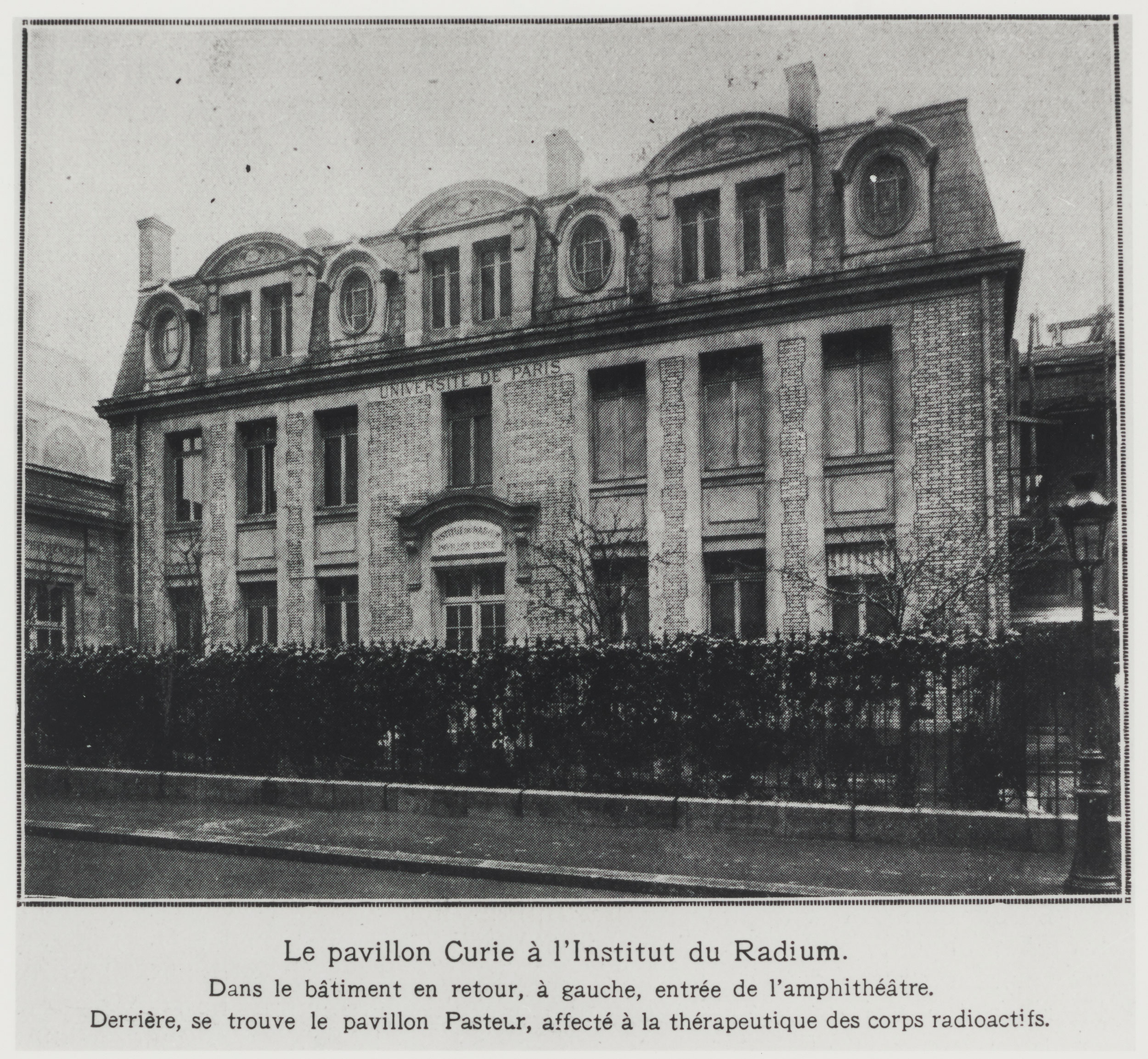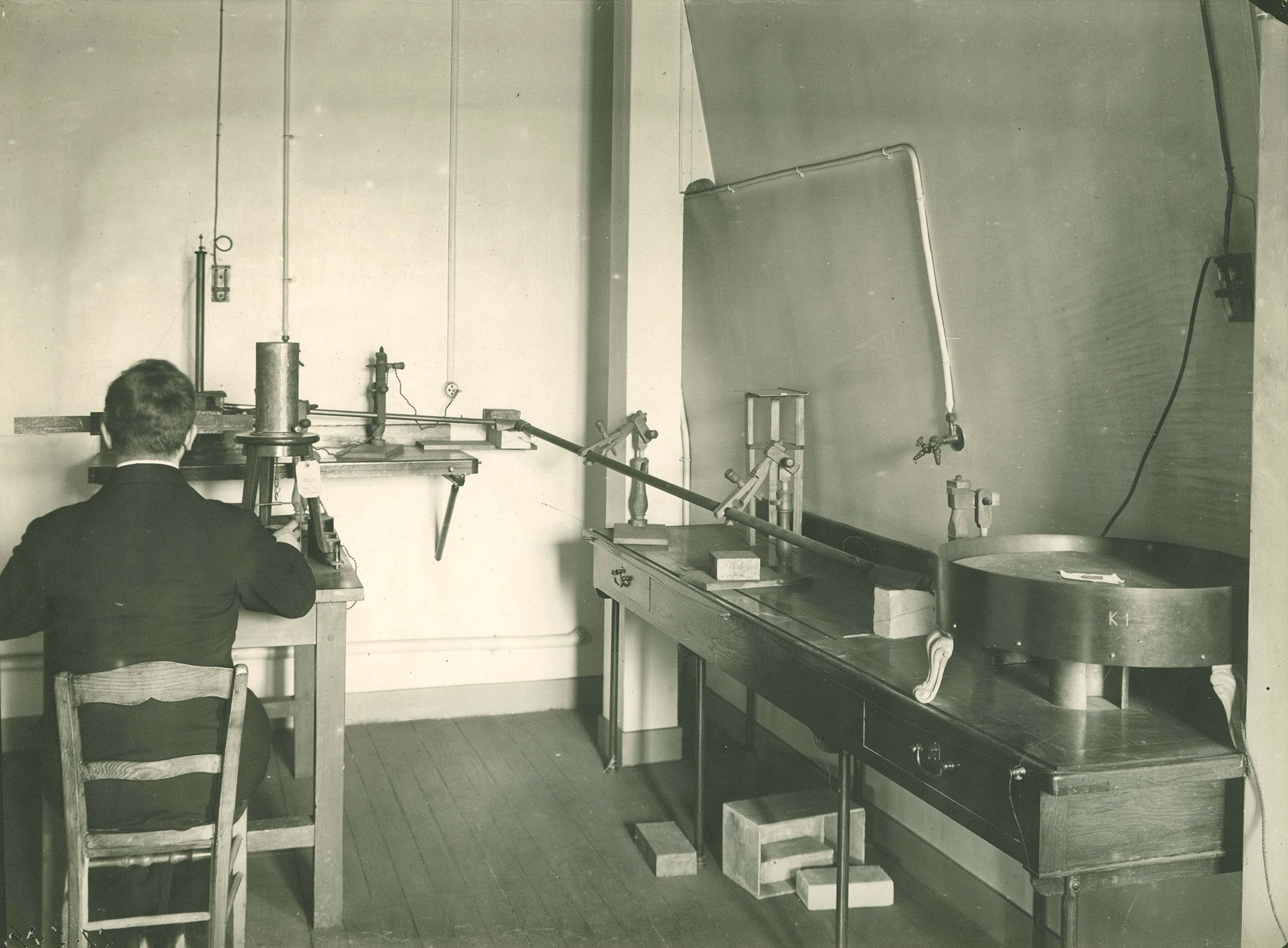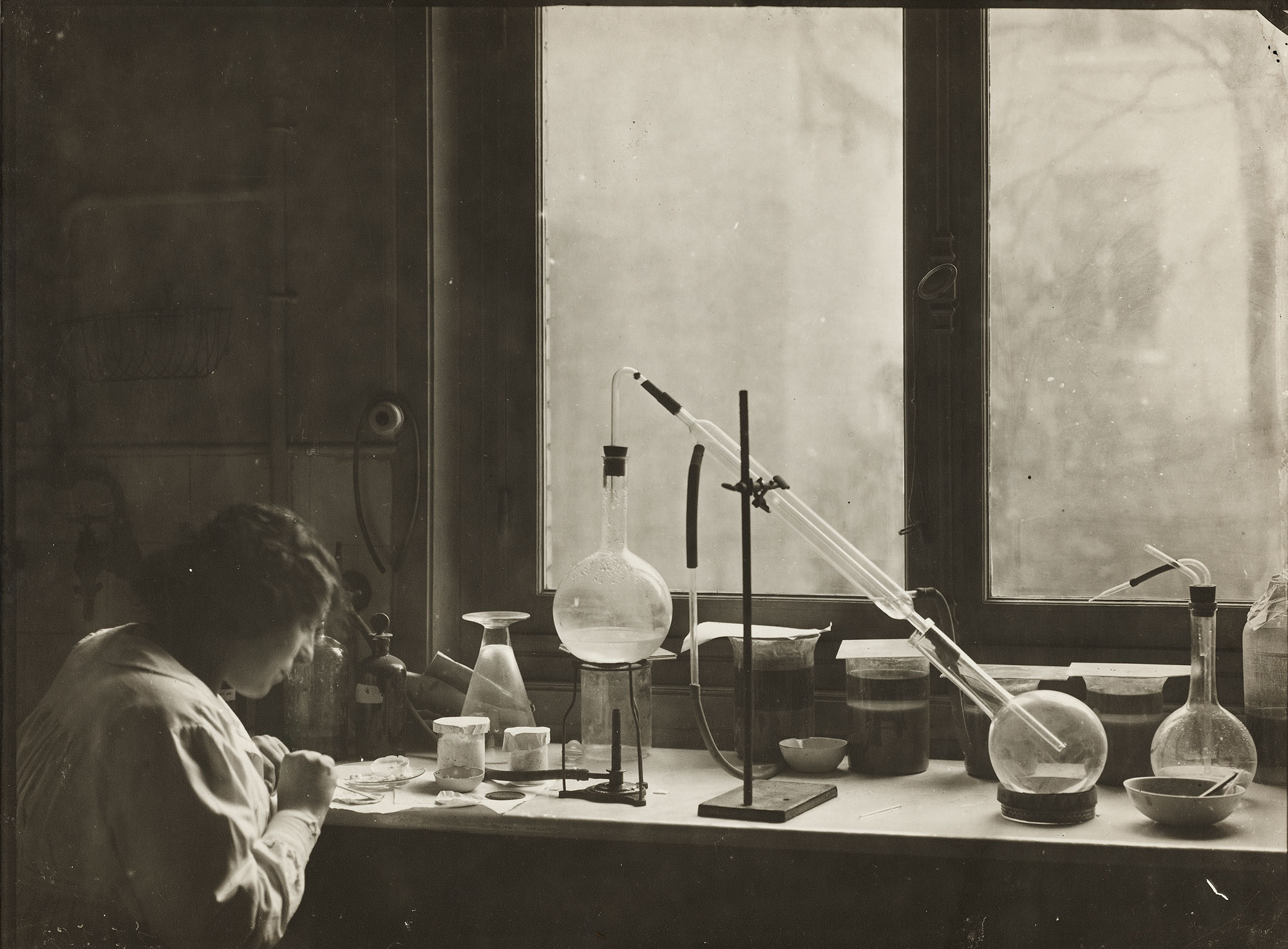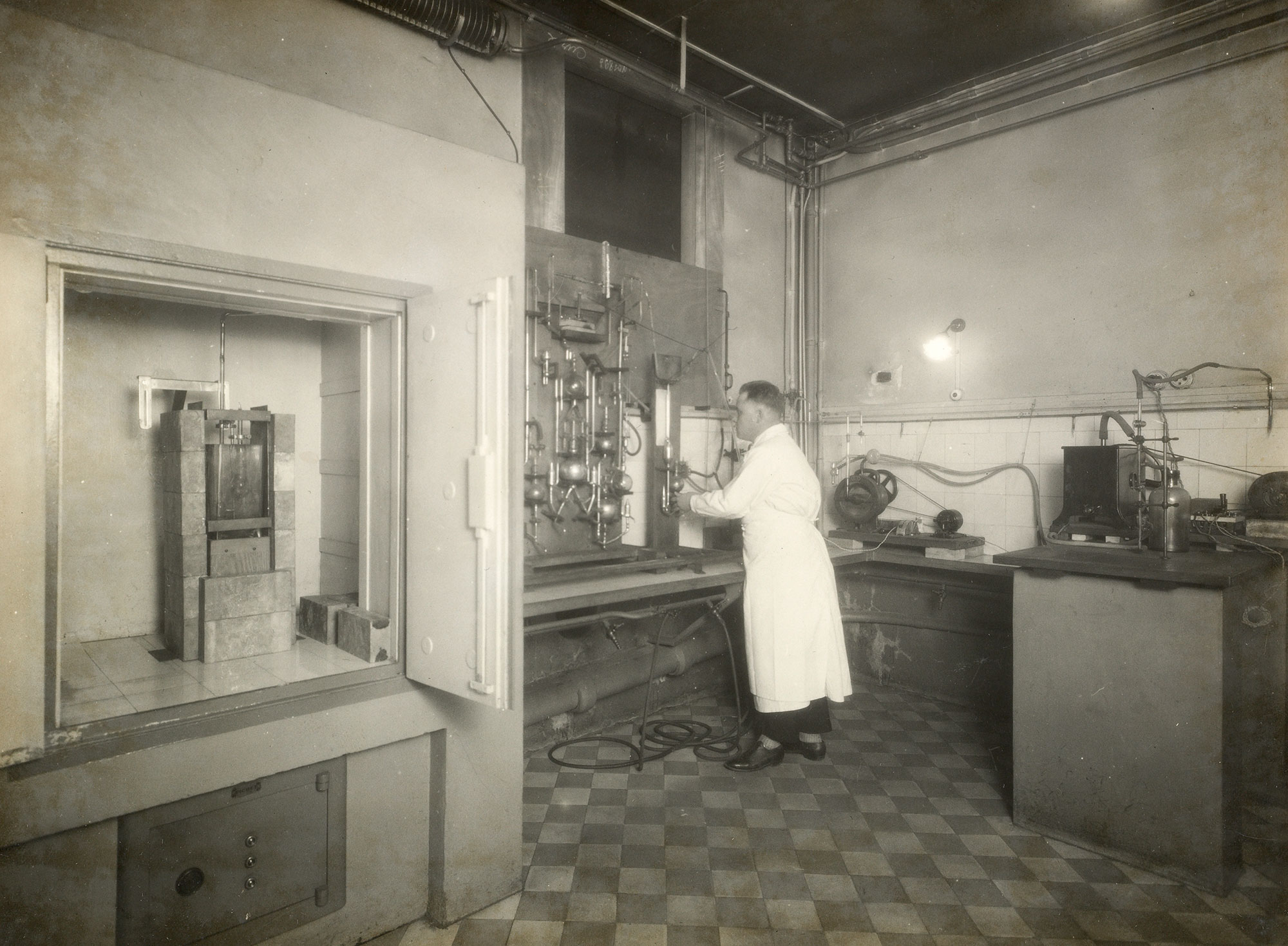
Plans to open an institute in Paris devoted to research on radioactivity, at the initiative of the Pasteur Institute and the University of Paris, first emerged in 1909. In 1915, three buildings were constructed: the Curie Pavilion, which houses the museum, the Pasteur Pavilion and the Sources Pavilion. Designed by architect Henri-Paul Nénot, they are located at no. 1, rue Pierre et Marie Curie, which at the time was called rue Pierre Curie.
The Radium Institute was not used at full capacity until the end of WW1. It was initially composed of two laboratories: the Pasteur Laboratory for biological research, directed by medical doctor Claudius Regaud, and the Curie Laboratory for physics and chemistry research, directed by Marie Curie. She had been directing the Curie Laboratory since 1906, following Pierre Curie’s tragic death. Starting in the 1920s, healthcare units were also erected to offer ionizing radiation treatment for cancer patients.
The laboratory at the Radium Institute was the third Curie Laboratory, after the premises where the couple had made their discoveries at the Advanced Industrial Physics and Chemistry Institute (ESPCI) of the city of Paris, which they occupied until 1904, and those on rue Cuvier, where the Curie Laboratory was still located in 1914. The staff and a large part of the instruments were transferred to the new premises from rue Cuvier. Marie Curie directed this third laboratory for nearly 20 years, until her death in 1934.



















